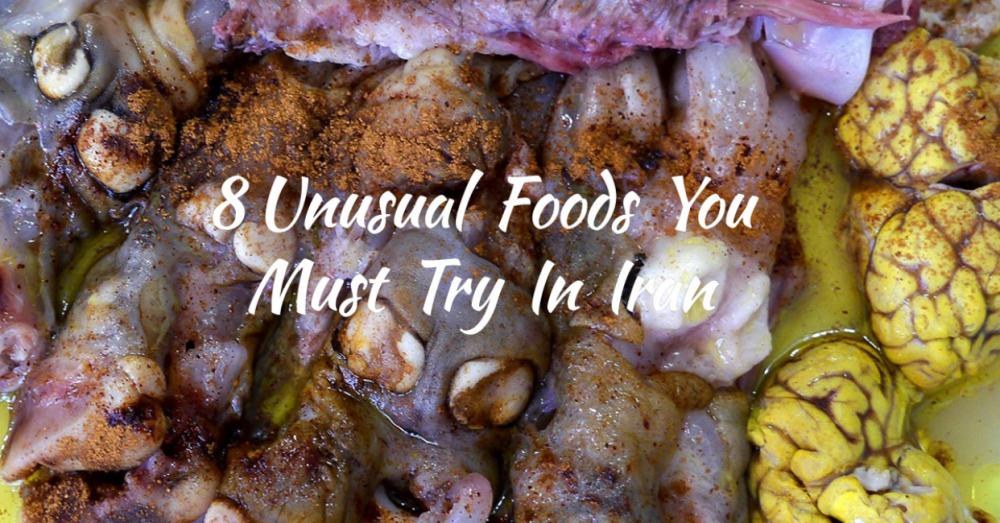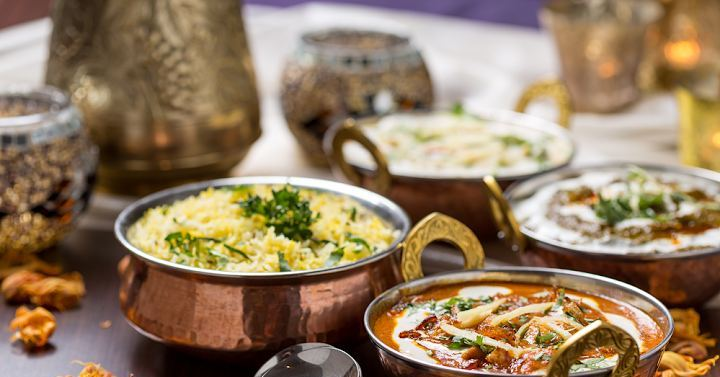8 Unusual Foods You Must Try In Iran
8 Unusual Foods You Must Try In Iran

Gird your stomach for a big challenge
It is true that unlike the Southeast Asian countries, Iranian people are very conservative when it comes to food.
Most people will only enjoy foods that are very similar to what they’ve had before. Kabab koobideh, Joojeh kabab or Ghormeh sabzi! But it doesn’t mean that you can’t find unusual foods here. Take a look at our list of the most unusual dishes in Iran that you must try when you are there.
Ash-e Yakh
If you’re planning to travel to the Iranian Azerbaijan region in the summer and would like to experience a totally different food, we suggest you try Ash-e Yakh
This local food is made of sour yogurt, ice cubes, fresh local vegetables, rice, garlic and spices. In order to prepare this food, local experts will boil fresh vegetables, rice and spices then let it cool down and add sour yogurt and ice cubes.
Barre Toodeli
Barre toodeli is one of the least known rare foods of Iranian food culture. Barre toodeli is the unborn fetus of a sheep or cow, which the butcher will pull out from those animals prior to slaughtering and offer to rich, elite guests. You can find Barre toodeli in some old fashioned butcheries and get it deep fried or barbecued.
Those who have eaten this, believe it is one of the most delicious foods!
It might be interesting to know that parts of this unborn fetus are also used to make some parts of an Iranian musical instrument called Taar.
Del, Jigar and Gholveh
Del, Jigar and Gholve (Heart, Liver and Kidney) kabobs are a popular street food in Iran. Making your way up the winding, mountainous streets of Darband in Tehran, one of the most common cuts of meat that you’ll see being skewered in the plethora of eateries is jigar. If you really want to try best Jigar in Tehran we suggest you to go to Bahman sq in Tehran.
Dolme Sirabi
Dolme Sirabi (Tripe Dolmade) is one of the local traditional foods unique to the industrial city of Arak in central Iran. Ingredients include split peas, rice, fresh aromatic vegetables like tarragon, cilantro and dill. Just like vine dolmades, white and clean tripe is filled with minced meat, onion, rice and vegetable and steamed in a sweet and sour sauce.
Tripe is a good source of vitamin B and its soft texture and taste combined with sweet and sour sauce satisfies a lot of fussy yet adventurous eaters.

Khalle Pache
You cannot get to know Iranian cuisine without trying “Kale Pache”, an Iranian classic dish, made with a sheep’s entire head and its hooves. Some consider it as an energetic breakfast while others avoid it because of the high amount of cholesterol. Perhaps, firstly it seems a bit frightening when different parts of the sheep’s head including brain, eyes and tongue are served on your plate. But the taste of it, which is seasoned with lemon and cinnamon may change your former perception. Cooking Kaleh Pacheh seems so easy. Just collect the heads and feet of sheep and then mash, cook and treat as per the recipe. However, it is not as simple as it looks. Kaleh pache , in most restaurants, is served from 3 am until midnight.
Sirab O Shirdoon
Sirab Shirdoon is an Iranian dish made with lamb’s tripe, chickpeas, onion, garlic, salt, pepper and saffron. Tripe is the lining of the stomach of a cow or sheep. Should you want to give it a try, keep in mind that tripe requires a long and slow cooking time of at least 12 hours if you want it to be tender. Tripe is also eaten in some other parts of the world like in the Eastern European cuisine.
Ashpal
Ashpal (roe) are the eggs from female fish. Roe is used both as a cooked ingredient in many dishes and as a raw ingredient. In the Caspian provinces of Gilan and Mazandaran, several types of roe are used.
Called ashpal or ashbal, roe is consumed grilled, cured, salted, or mixed with other ingredients. If salted or cured, it is consumed as a condiment. If used fresh, it is usually grilled, steamed, or mixed with eggs and fried to form a custard-like dish called “Ashpal Kuku”.
Besides the much sought-after caviar, roe from kutum (also known as Caspian white fish or Rutilus frisii kutum), Caspian roach (called “kuli” in Gileki), bream (called “kulmeh” in Gileki), and Caspian salmon are highly prized. Roe from carp is less common and barbel roe is also occasionally used.
Tahdig
Warning: It would disappear faster than you could even make it to the table. If you blink, it will be gone and simply no leftovers!
The word tahdig is Persian, meaning “bottom of the pot.” It’s a layer of crispy rice that develops on the bottom of the pot while the rice is cooking. It’s crunchy, delicious, and considered the “prized” part of the rice.
The talent of an Iranian cook is often measured by his or her ability to create a quality tahdig.




